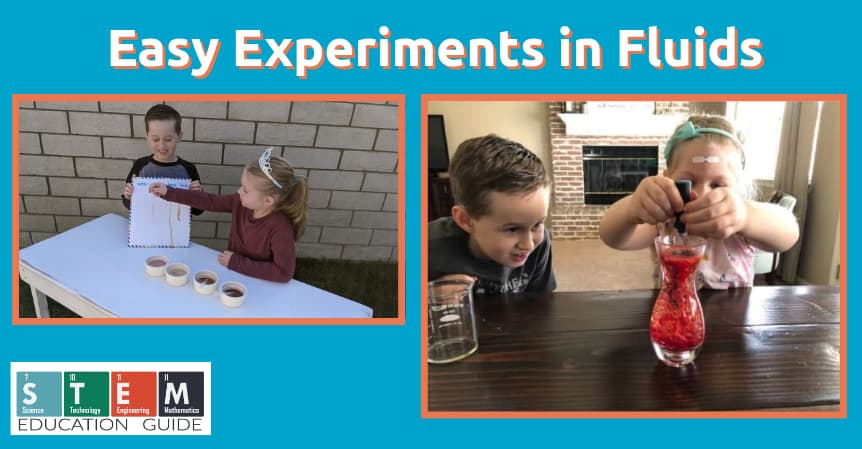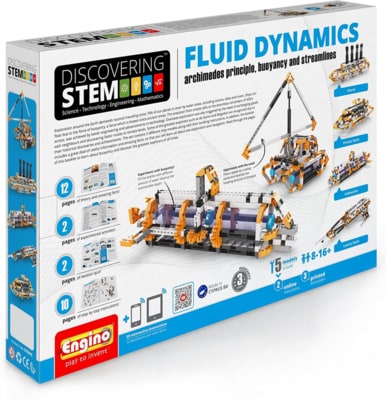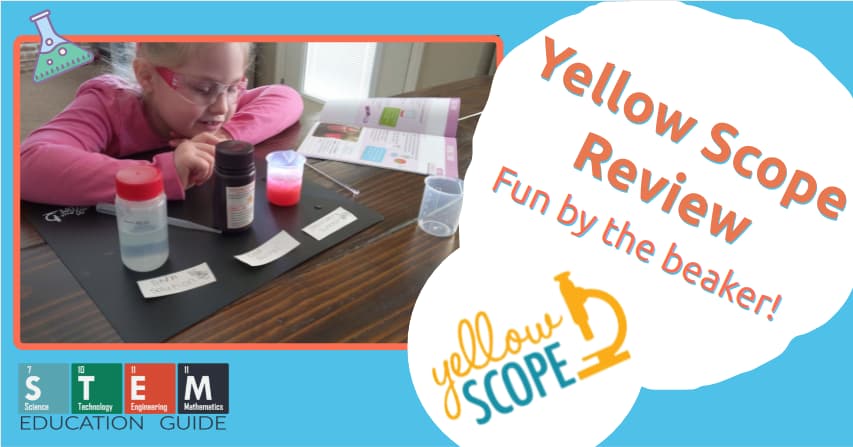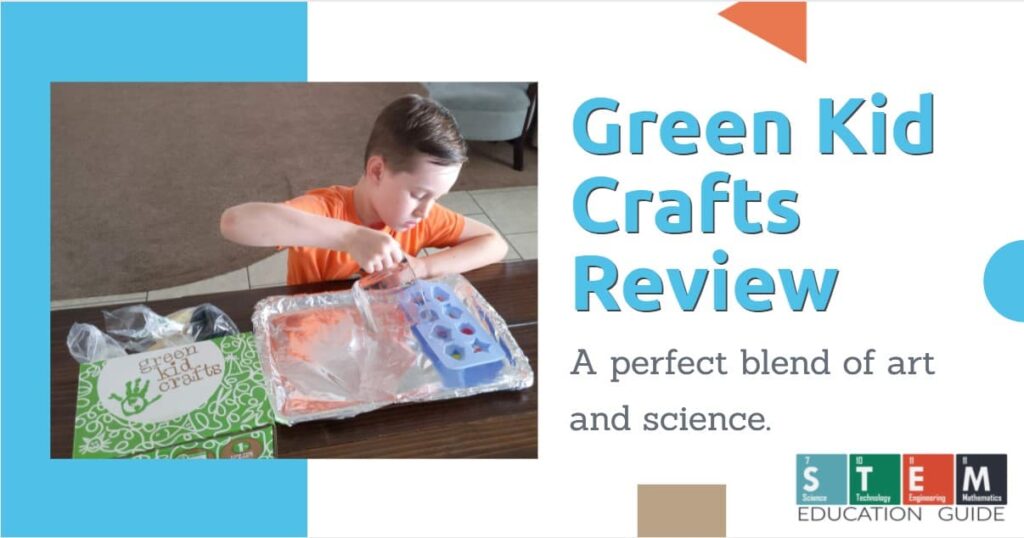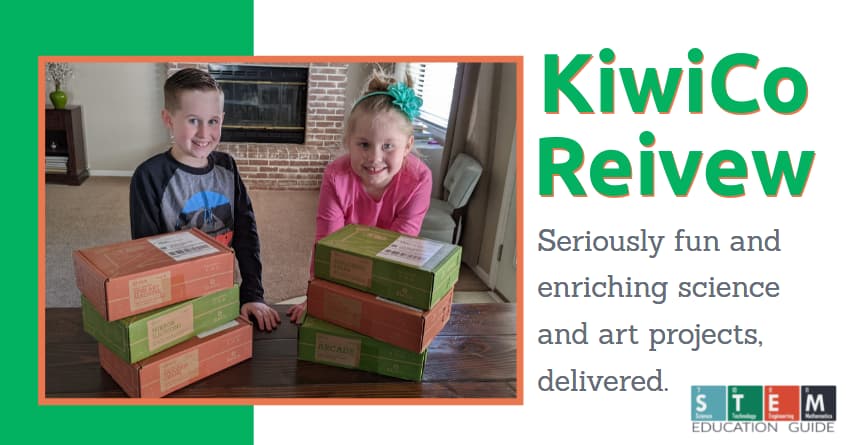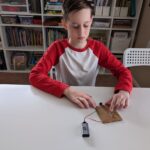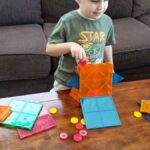Fluids are a significant part of our lives, and understanding that is a key component of STEM learning.
Students can do several STEM experiments in fluids to better understand how water and other fluids form the foundation of our lives.
Keep reading to discover five STEM experiments in fluids that are easy to do but provide great scientific insight for your students.
Table of Contents
STEM Experiments in Fluids
As you may have guessed, most of these experiments in fluids will involve water. Water is not only the most accessible material to get a hold of and simple to work with, but it is one of the best materials for students to use to learn about science.
Here are five easy experiments in fluids that you can do with your students.
Discovering STEM Fluid Dynamics
Even though there are plenty of experiments that you can easily do with items you already have in your classroom, sometimes a kit is beneficial towards introducing more complex concepts in your STEM lessons. This STEM Fluids Dynamics Kit from Engino does just that.
As the name suggests, this kit focuses on teaching fluid dynamics, which are fundamental physics principles. This kit equips your students to build six different models which each illustrate separate theoretical fluid dynamics concepts.
Through the different experiments, your students will learn various concepts, such as how blood flows through our bodies or why some objects float while others don’t.
This kit also comes with an operating manual written by teachers that includes:
- Theory
- History
- Quizzes
- Building instructions
Don’t worry about taking the models apart. This kit also comes with an extraction tool that makes disassembly easy without the fear of breaking the parts.
You can see if the kit is still available here.
Viscosity Experiment
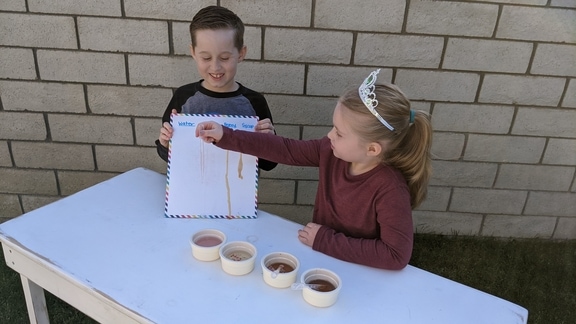
Viscosity is an important science concept for kids to understand the nature of fluids fully. This experiment is an excellent way for your students to discover how different fluids flow, and it’s very easy to do.
For this experiment, you’ll need:
- A whiteboard
- A timer
- Four cups of a similar size
- Several different liquids, such as:
- Water (add food coloring for better visibility)
- Syrup
- Olive oil
- Ketchup
First, take your whiteboard and draw a line about two inches from the top – no need for exact measurement. Then pour each of your liquids into a different cup. Be sure to pour the same amount for each liquid.
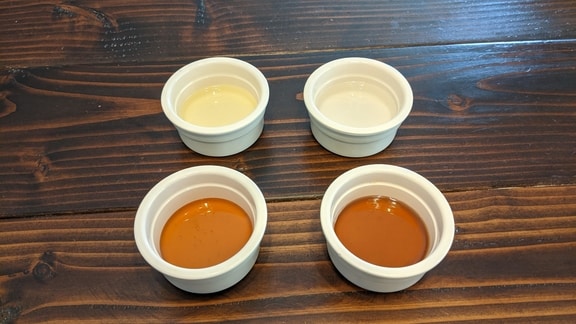
Once all the cups are filled, choose the first liquid to pour down the board. Be sure to start your timer once your liquid passes the line you drew and time how long it takes for the liquid to reach the bottom. Do the same with the remaining liquids, one at a time.
When done, ask your students to compare the times, and challenge them to figure out why the liquids all reached the bottom at different times. Make sure your students record everything in a journal.
You can do this experiment with any liquid, and the more they differ in viscosity, the more interesting this experiment is.
My kids have tested a ton of science and chemistry kits, and by far, Yellow Scope was ahead of everyone. Please check out our hands-on review of Yellow Scope chemistry kits.
Oil and Water Experiment
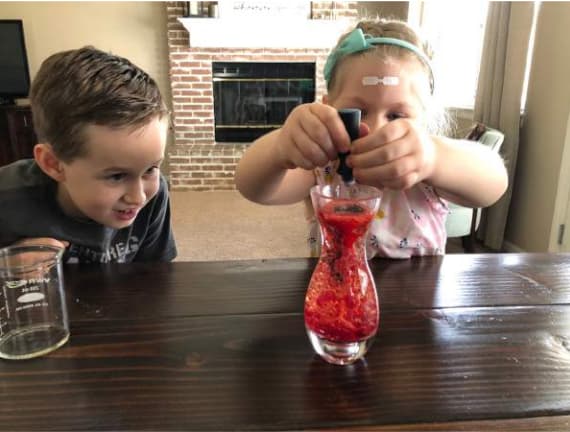
Density is another concept that’s important to learn about for your students to understand fluids. Your students probably already know that oil and water don’t mix, but they probably don’t know why.
This is one of the most straightforward experiments in fluids to do, as all you need is oil and water.
Here are the exact materials you’ll need to gather:
- Vegetable oil
- Food coloring (1-3 different colors)
- A jar
- A bowl
- Water
Fill your jar with water, and add oil to a separate bowl (about 4 tablespoons). Add a few drops of food coloring and whisk it into the oil. At this point, ask your students to describe their observations, as they’ll probably already start to notice that water and oil do not mix.
Once the oil and food coloring are well whisked, pour the oil into the jar of water. You’ll soon start to notice a bunch of droplets coming down from the oil.
Explain to your students how the difference in density of oil and water is responsible for the reaction they see. You can also use other fluids for this experiment in fluids, such as corn syrup. Again, make sure students record their observations in a journal.
Green Kid Crafts provides STEAM activities and experiments sent to your door every month. I like this subscription because they have a wide range of educational subjects for kids. Please take a look at our review of Green Kid Crafts here.
Water, Ice, and Snow Experiment
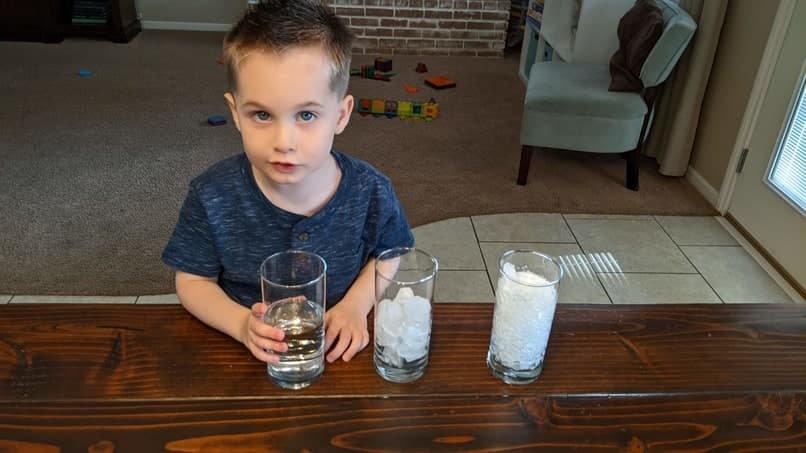
This is another fun experiment that will have your students scratching their heads at the results. You’ll need snow for this experiment in fluids, so make sure you do it in the winter!
This is a simple experiment that only requires water in different forms:
- Water (liquid)
- Ice cubes
- Snow
You’ll also need three jars.
First, fill one of the jars with water. This will act as your control to make the final results clearer to your students.
Then, stuff a second jar with ice cubes. Try not to pack this jar too much—be sure to leave some air pockets. For the third jar, go outside and pack it full of snow.
Line the jars up beside each other and wait. It shouldn’t take long before the snow starts melting, followed by the ice. As the molecules in ice are tighter than snow, you’ll end up with more water in the ice cube jar than in the snow jar.
Your students may be perplexed at first, but get them to theorize why the snow and ice melted the way they did before explaining the science to them. As always, let your students record what they experienced in a journal.
Wrapping Up
Experiments in fluids are some of the easiest STEM experiments you can undertake with your students but don’t be fooled by how simple they are.
There’s a lot that students can learn about fluids and other science concepts through these experiments that can be applied to other scientific principles.
There’s no shortage of experiments in fluids you can do with your students, so be sure to try out a few!
We recently named KiwiCo as the best overall subscription for kids. We have a complete guide to KiwiCo in our hands-on review here. Make sure to use the coupon code in the article.

